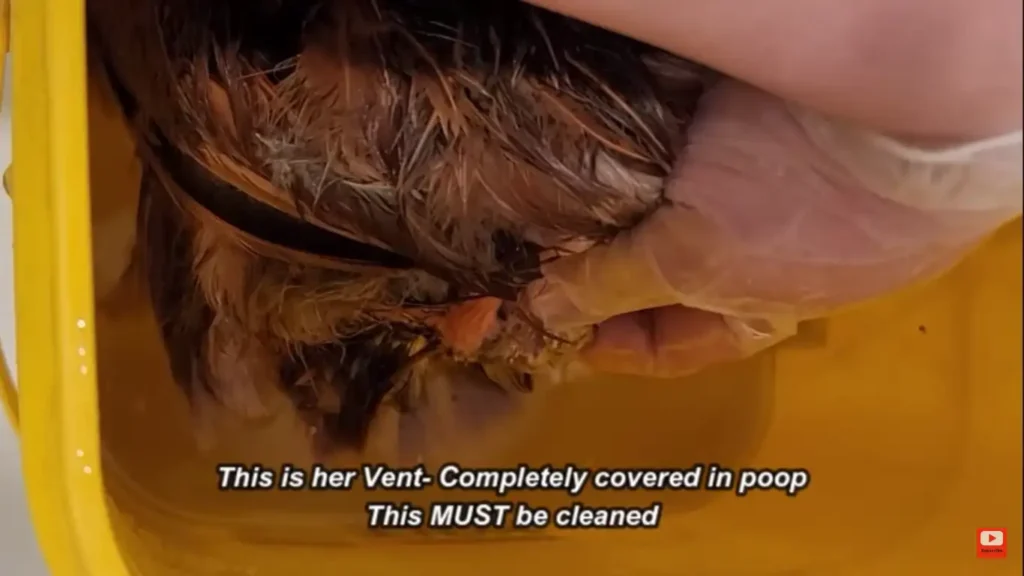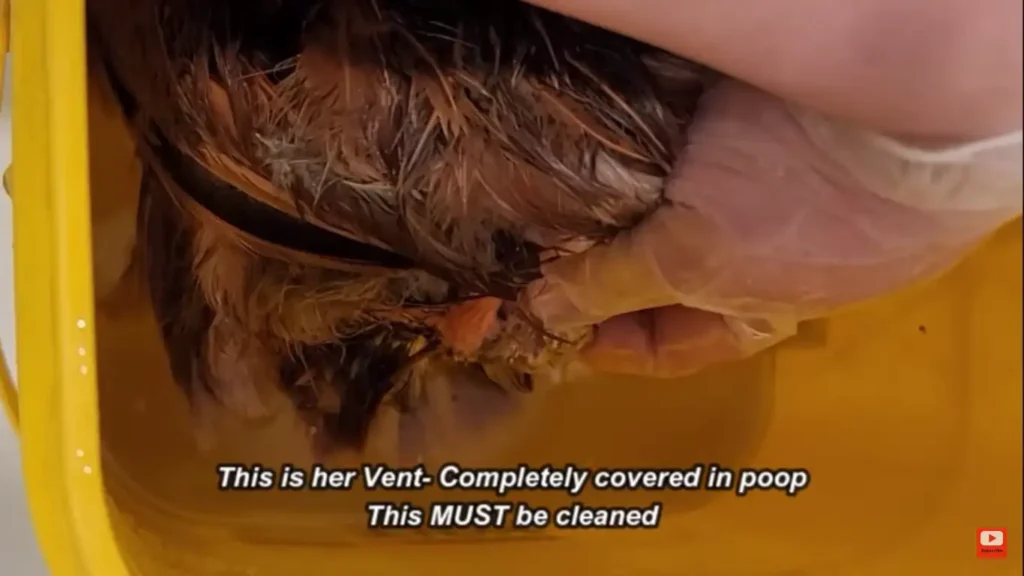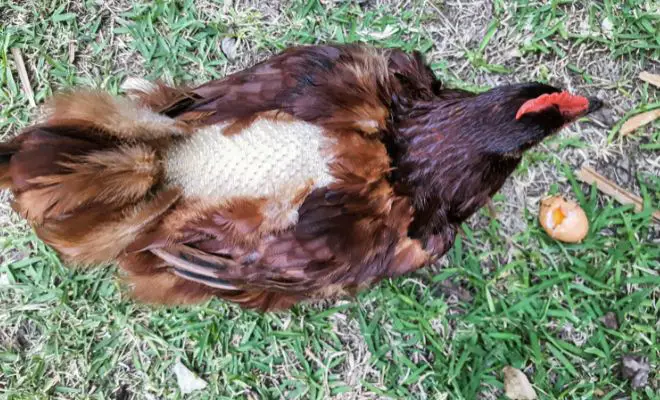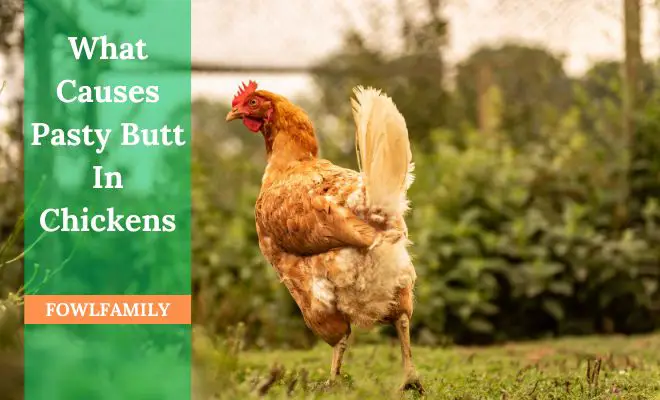Vent Gleet in Chickens: What Are the Causes and How to Prevent?

Chickens face a pesky problem known as Vent Gleet. It’s like a bird’s version of an upset tummy. This condition affects their vent area, causing discomfort and distress.
Now, what causes vent gleet in chickens and how to treat it? One common cause is an overgrowth of bad bacteria in the digestive system. Poor hygiene and stress make matters worse. Symptoms include nasty-smelling poop, swelling, and sometimes, even diarrhea. Treatment for Vent Gleet involves improving hygiene and diet. Medications sometimes work out!
Want to learn the complete guide to healing chickens from vent gleet? Let’s break the ice!
Table of Contents
What Causes Vent Gleet in Chickens? 6 Reasons Why!
Vent gleet in chickens has several potential causes, most of which involve bacterial infections. So, is vent gleet bacterial? Yes, it is!
However, here are the main causes, discussed in detail.
1. Bacterial Infections
Staphylococcus bacteria are a common cause. They enter through cuts or abrasions around the vent.
Escherichia coli (E. coli) bacteria from feces also lead to vent gleet. Salmonella and other types of bacteria are involved too.
I even discovered parasites inside the chicken can upset its vent area. It’s what leads to vent gleet.
2. Poor Hygiene and Sanitation
Dirty coops with accumulated feces and litter spread bacteria. Lack of regular cleaning allows bacteria to grow and infect chickens.
Shared water and feed sources also transfer bacteria between birds.
3. Nutritional Deficiencies
Lack of proper nutrients weakens the immune system of chickens.
Vitamin A and protein deficiencies make chickens more prone to infections. Imbalanced calcium levels also contribute to vent issues.
4. Stress and Overcrowding
Stressed chickens have lower immunity, making them vulnerable to diseases. Overcrowding leads to increased exposure to bacteria from feces. Aggression and pecking among overcrowded birds cause vent injuries.
5. External Injuries
Any cuts, abrasions, or wounds around the vent area create entry points for bacteria.
I noticed rough surfaces or sharp objects in the coop injure the vent. Also, pecking and bullying by other chickens also cause vent injuries.
6. Improper Biosecurity Measures
Introducing new birds without quarantine brings in bacteria. Sharing equipment or supplies with other flocks increases disease risk. Visitors, pests, and wild birds also carry and transmit bacteria.
All you have to do is address all these causes before you attempt to treat the vent gleet in poultry.
So, Is vent gleet contagious?
Yes, vent gleet is contagious in chickens.
The bacteria that cause vent gleet, such as Staphylococcus, E. coli, and Salmonella, can spread easily from infected birds. It directly contact or exposure to contaminated surfaces, water, feed, and feces.
Can vent gleet kill a chicken?
Yes, if left untreated, vent gleet can potentially kill a chicken.
While some mild cases resolve on their own, severe or chronic vent gleet leads to serious complications and even death. Here are a few reasons why vent gleet can be fatal.
- Systemic infection: The bacteria spread from the vent area into the bloodstream, causing a systemic infection that overwhelms the chicken’s immune system.
- Septicemia: If the infection goes untreated, it progresses to septicemia (blood poisoning), which can be life-threatening.
- Dehydration and malnutrition: Vent gleet makes it difficult for the chicken to pass feces properly, leading to dehydration and an inability to absorb nutrients properly.
- Secondary infections: The vent area can become an entry point for other infections, especially if the chicken is immunocompromised.
- Egg peritonitis: In egg-laying hens, the infection can spread to the reproductive tract, causing potentially fatal egg peritonitis.
6 Symptoms of Chicken Vent Gleet

Early detection is crucial for the successful treatment of vent gleet. But What does it look like? Usually, we noticed, Vent Gleet includes a sticky yellow-whiteish paste-like discharge from the vent.
You can see hard white crusting on dirty tail feathers, and a strong unpleasant smell, too. Here’s a detailed signs and symptoms.
1. Pasted Vent
One of the most noticeable symptoms is a pasted vent area, where feces and discharge accumulate around the vent. The vent feathers appear matted and stuck together with dried discharge.
The pasted area can become crusty and difficult to clear.
2. Swelling and Inflammation
The vent area (cloaca) itself appears swollen and inflamed. The skin surrounding the vent looks red, irritated, and protruding outward.
In severe cases, the swelling becomes so significant that the vent is almost closed.
3. Abnormal Discharge
Chickens with vent gleet often have an abnormal discharge coming from the vent. The discharge ranges from a thin, watery fluid to a thick, cheesy-like pus.
The discharge is tinged with blood or has an unpleasant odor.
4. Picking and Pecking
Affected chickens frequently pick or peck at their vents due to irritation and discomfort. This behavior leads to further injury, bleeding, and potential spread of infection.
5. Reduced Appetite and Lethargy
Vent gleet can cause general illness in chickens, leading to a reduced appetite and lethargy. Affected birds appear dull, less active, and spend more time resting or isolating themselves.
6. Soiled Vent Feathers
The feathers around the vent area appear soiled, discolored, and unkempt due to the discharge. In severe cases, the feathers fall out or become matted and difficult to clean.
8 Treatment for Vent Gleet in Chickens (Prevention Included)
Here comes the main part! How to treat vent gleet in chickens! First, if the cloacitis is in the early stage in chickens, here’s how you treat it –
- Give the sick chicken a special feed mix twice a day for 2 days. This has nutrients to help with stress and stomach issues. I would say ER Quick (40mls), Gel Formula (1ml), and liquid calcium (2mls).
- Gently clean the feathers around the vent area. Remove any poop that is stuck there.
- Put a small amount (3mls) of a warm gel into the vent and massage gently. This can help if the chicken is constipated and having trouble pooping.
- Look at the chicken’s poop under a microscope to check for infections.
- Keep the sick chicken warm and give it fresh food and water.
- Add citric acid and an energy gel to the chicken’s drinking water. This helps give energy and reduces stomach acid.
- Give antibiotics twice a day for 4 days to fight the bacterial infection.
- Once feeling better, you can put the chicken back with the rest of the flock.
- If no improvement after 4 days of treatment, the chicken may need to be put down humanely.
- Give all chickens in the flock the energy gel for 2 days to reduce stress during this illness.
Now, let’s share all the necessary steps in general –
1. Antibiotics for vent gleet in chickens
Antibiotics are often necessary to fight the bacterial infection. The vet will recommend suitable antibiotics based on the type of bacteria.
You can add antibiotics to the drinking water or by injection. The full course of antibiotics must be completed as prescribed. Keep it in mind!
2. Cleaning and Disinfecting
When it comes to cleaning the vent area, gently clean it. Use warm water and a mild disinfectant. Remove any dried discharge or debris around the vent.

It’s better if you apply an antibiotic ointment or powder to the affected area. Most importantly, keep the vent area clean and dry during treatment.
3. Isolation is Another Key
Isolate any affected chickens from the rest of the flock. This prevents the spread of the bacterial infection. Provide a clean, comfortable, and stress-free environment for recovery.
4. Supportive Care
Offer electrolyte solutions to prevent dehydration. Provide easily digestible, high-protein foods for proper nutrition. Keep the recovery area clean and well-ventilated.
5. Culling is Important Sometimes
In severe, chronic cases, culling (removing from the flock) may be necessary. This prevents the spread of infection and reduces suffering.
6. Probiotics and Supplements
Probiotics can help restore healthy gut bacteria after antibiotic treatment. Vitamin and mineral supplements may aid in recovery and immune function.
7. Prevention is Crucial
Be sure you improve hygiene, biosecurity, and management practices. Reduce stress factors like overcrowding and poor nutrition.
Vaccinate the flock against common bacterial diseases if the vet recommends it.
8. Veterinary Supervision
Consult a veterinarian, especially for severe or unresponsive cases. Follow the vet’s instructions carefully for the best outcome.
Regular check-ups may be needed during and after treatment.
See the video to get more help to treat vent gleet in chickens.
How to treat vent gleet naturally?
While there are home remedy approaches to Vent Gleet, it’s not that effective! However, follow the given advice –
Separate the affected hen from the flock.
Gently clean the vent area daily with warm water and a mild antiseptic solution (diluted chlorhexidine or diluted Betadine).
Ensure your hens have access to a balanced diet formulated for chickens. Avoid treats high in sugar or moisture.
Consider adding apple cider vinegar (ACV) to their drinking water (1 tbsp per gallon). It’s to promote a healthy gut environment. You can also offer probiotics (plain yogurt or commercial supplements) to restore gut bacteria.
So, will yogurt help vent gleet in chickens? Yes, it restores gut bacteria.
Important Note: Some recommend soaking the hen’s vent area in warm Epsom salt solution for 10 minutes. It’s followed by drying and applying an antifungal cream. However, take the vet’s suggestion just before that!
FAQs
Check out some related queries! It’ll help you get more facts about vent fleet in chickens.
Q. What happens if you don’t treat vent gleet?
Untreated, vent gleet can worsen, causing discomfort, egg-laying problems, and even death. See a vet for severe cases.
Q. What do you feed chickens with gleet?
Stick to a balanced chicken diet and avoid sugary/wet treats. Consider apple cider vinegar in water and probiotics for gut health.
Q. What antifungal cream for chickens with vent gleet?
Consult a vet before using any cream on chickens. Human meds can be harmful.
Final Word
Vent gleet in chickens is a serious bacterial infection. It needs prompt treatment. Give antibiotics as prescribed. Clean the vent area gently. Isolate sick birds. Provide supportive care like electrolytes and high-protein food. Improve hygiene, and nutrition and reduce stress. This can prevent vent gleet spread.
If necessary, see a vet, especially for severe cases. With proper care, most chickens recover well from vent gleet. Being watchful and acting quickly is key.






